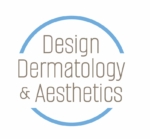About Aging / Sun Damaged Skin
What is it?
We realize that our culture tends to associate suntanned skin with a lifestyle that is healthy and active. Unfortunately, this is a myth that should be retired; sun and age damage go hand in hand and can affect you both physically and psychologically. A “healthy tan” is not good for your skin; any sun exposure, no matter how small, causes irreversible damage. The subsequent damage is not just skin deep, as it alters the DNA of your skin cells. That’s why as much as 90 percent of the signs of aging / sun damaged skin are related to sun exposure.
The sun gives off ultraviolet light that damages the skin and contributes to premature skin aging, dark spots, and other problematic conditions.
What causes Aging / Sun Damaged Skin?
The sun’s UV rays are the main cause of aging, sun-damaged skin. Sun and age damage are linked because they exacerbate one another. Together, they reduce your skin’s elasticity by breaking down collagen while decreasing your skin’s shape and fullness. Telltale signs of sun and age damage include wrinkles on your face, neck, and chest, lines around your mouth and eyes, sagging skin, age spots, and freckles and/or moles.
Common treatments?
At Design Dermatology & Aesthetics, we have a variety of options to address sun and age damage, and we have the knowledge and experience to tailor it to your unique case. However, there are many steps you yourself can take to prevent and even repair your skin. These steps include wearing 30+ SPF sunscreen daily (even on cloudy days!), covering up exposed skin when outside, avoiding intense sun between the hours of 10:00am to 3:00pm, the avoidance of indoor tanning beds, and the use of moisturizing creams and lotions at night.
Our approach & expertise
At Design Dermatology & Aesthetics, we focus on you as a person. Our compassionate, knowledgeable team works with you to address your signs of sun and age damage, and you can rely on us to answer your questions and be an integral part of your support system. Healthy skin is our passion. Contact us today if you notice sun and age damage so that we can help you repair and restore your skin.

